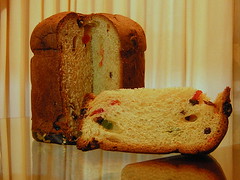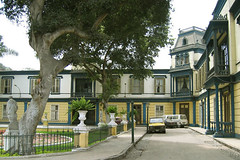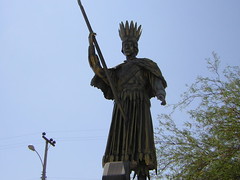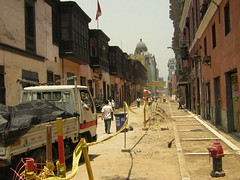Eating in Lima – What not to miss – Creole classics
Part two – Creole classics
Peruvian food was all but unknown to the world a decade ago, but this has begun to change in recent years. In 2004 an article appeared in The Economist. “Peru can lay claim to one of the world’s dozen or so great cuisines“. As the news spread of the discovery of one of the world’s best kept secrets, the excitement began to build. In 2006 at the Madrid Fusion Fourth International Summit of Gastronomy, one of the field’s most important conferences, top chefs, critics and journalists were blown away. The rumours were true, and the city of Lima, where many of the nation’s 400+ national and regional dishes can be found in cheap local haunts and fancy restaurants alike, was declared the Gastronomic Capital of the Americas.
——————–
Creole Classics
Other than sea food, the coastal population in Lima, a mix of Spanish and indigenous descendents known as creoles, have a wide selection of rich-tasting dishes for visitors to try.
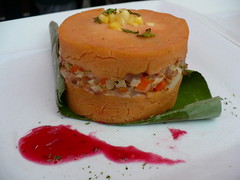
Causa
One of my personal favourites has to be Causa. Although an old dish, it got its name, simply “cause” in English, from the War of the Pacific in the late 1800s. Based on simple mashed potatoes, it was a quick and cheap meal for soldiers to help them fight for “the cause”. Its extreme deliciousness would have certainly boosted moral. The mashed yellow potato itself is flavoured with the ever-present in coastal cuisine ají amarillo, yellow chilli, and a dash of lemon. It is then used to roll around or sandwich anything from chicken to olives to seafood, before being served at room temperature.
Typical creole rice dishes are made with arroz verde, or green rice. To colour and flavour the rice, cilantro and parsley are used, while additional flavour is brought by the chicken stock the rice is cooked in and the carrots, peas and small amounts of finely chopped rocoto chilli mixed in. You’ll often find this rice in dishes such as Arroz con Pollo with chicken or Arroz con Pato with duck, among others.

If it comes in big earthen pots, it's comida criolla
It might come from Huancayo in the Andes, but Papa a la Huancaína has been well and truly adopted into creole cuisine. It is a starter that consists of sliced boiled yellow potatoes covered in huancaína sauce. This sauce is made from fresh Andean cheese, evaporated milk and yellow chilli. Served at room temperature on a bed of lettuce and with a boiled egg, this treat can vary between milky in taste to a little spicy. This is one definitely not to be missed.
Ají de Gallina is a simple dish that is full of flavour. Thin strips of chicken are covered with a sauce made from ají amarillo mixed with parmesan cheese, evaporated milk and ground pecans. In Lima you will find it is always served with white rice.
Also widely enjoyed in Lima are the culinary creations of the African and Chinese descended communities, but these will be discussed next time.
It doesn’t matter what you pay in Peru for your meal, whether $20 or $3, the food is usually just as delicious- its the surroundings that change. So depending on budget, from big spender to backpacker, try creole food in the following restaurants:
José Antonio – San Isidro, Chacarilla and Asia beach
El Embrujo – Calle Berlín 536, Miraflores
El Bolivariano – Psj. Santa Rosa 291, Pueblo Libre
El Rincón Que No Conoces – 636 Bernardo Alcedo, Lince
Sabores Peruanos – Av. Benavides 2392, Miraflores
Or almost anywhere else!
——————–
What not to miss:
Seefood Heaven | Afro-Peruvian | China-Influenced | Fast Food | Desserts | Non-Limeño
Tags: ají, aji de gallina, arroz con pato, causa, comida criolla, eating in lima, papa a la huancaina





